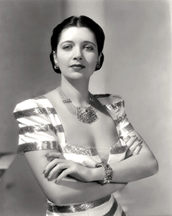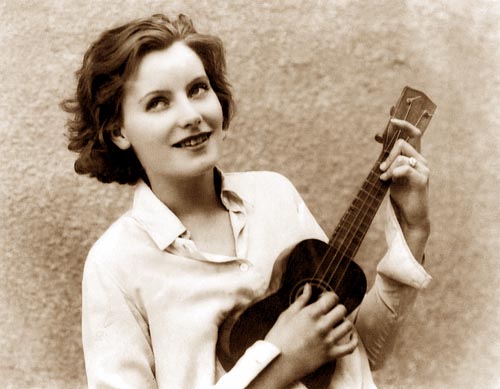This post is a revised version of one that appeared on January 10, 2012:
 For decades, actress Kay Francis, a big star in the 1930s, was all but forgotten by contemporary critics and audiences, but not so today. The good folks at Turner Classic Movies, bless their hearts, have worked hard to place her pictures back into the spotlight.
For decades, actress Kay Francis, a big star in the 1930s, was all but forgotten by contemporary critics and audiences, but not so today. The good folks at Turner Classic Movies, bless their hearts, have worked hard to place her pictures back into the spotlight.
Francis, born Katherine Edwina Gibbs on January 13, 1905, in Oklahoma City, starred primarily in what are sometimes dismissively dubbed “women’s pictures,” but her work usually rises above even the most trite and sentimental of plots and premises.
On Monday, TCM again honors Francis with what has become an annual birthday tribute, airing ten of her pictures between the hours of 6am and 8pm. Though TCM has omitted some of Francis’s best work from the tribute this time around — she’s wonderful in the Ernst Lubitsch classic Trouble in Paradise, and she excelled when paired with William Powell in several pictures in the early Thirties, especially the romantic comedy Jewel Robbery and the tear-jerker romance One Way Passage, both released in 1932 — you should, if you’ve never been exposed to the glamor and grit that is Kay Francis, be readying your DVR, even as you read this, to capture all fourteen hours of the tribute. (Those who are already Francis fans won’t need the above nudge.)
Here’s the full line-up (all times eastern):
6:00 A.M. — STREET OF WOMEN (1932)
A property developer is torn between his wife and his mistress.
Cast: Kay Francis, Roland Young, Alan Dinehart. Dir: Archie Mayo
7:15 A.M. — ANOTHER DAWN (1937)
An officer’s wife at a British outpost in Africa falls for another man.
Cast: Kay Francis, Errol Flynn, Ian Hunter. Dir: William Dieterle
8:30 A.M. — STOLEN HOLIDAY (1937)
A Paris fashion model marries a fortune hunter to protect him from the law.
Cast: Kay Francis, Claude Rains, Ian Hunter. Dir: Michael Curtiz
10:00 A.M. — SECRETS OF AN ACTRESS (1938)
A leading lady falls for a married architect who’s invested in her play.
Cast: Kay Francis, George Brent, Ian Hunter. Dir: William Keighley
11:15 A.M. — WOMEN ARE LIKE THAT (1938)
Years after their break-up, a couple finds each other all over again.
Cast: Kay Francis, Pat O’Brien, Ralph Forbes. Dir: Stanley Logan
12:45 P.M. — WOMEN IN THE WIND (1939)
Personal conflicts flare between competitors in a women’s air race.
Cast: Kay Francis, William Gargan, Victor Jory. Dir: John Farrow
2:00 P.M. — IT’S A DATE (1940)
Mother-and-daughter singers vie for the same man and the same stage part.
Cast: Deanna Durbin, Kay Francis, Walter Pidgeon. Dir: William A. Seiter
3:45 P.M. — PLAY GIRL (1940)
An aging gold digger takes a young woman under her wing.
Cast: Kay Francis, James Ellison, Mildred Coles. Dir: Frank Woodruff
5:15 P.M. — ALLOTMENT WIVES (1945)
Unscrupulous women marry servicemen for their pay.
Cast: Kay Francis, Paul Kelly, Otto Kruger. Dir: William Nigh
6:45 P.M. — DIVORCE (1945)
A frequently divorced woman sets her sights on a happily married man.
Cast: Kay Francis, Bruce Cabot, Helen Mack. Dir: William Nigh
For more on Kay Francis, check out Scott O’Brien’s well-received biography of the star, Kay Francis: I Can’t Wait to be Forgotten–Her Life on Film and Stage, published by BearManor Media and out now in a revised and updated second edition.
P.S. The title of this post refers to the widely known fact that Francis had a rather noticeable speech impediment. Listen carefully when she pronounces her Rs, and you’ll hear it.



